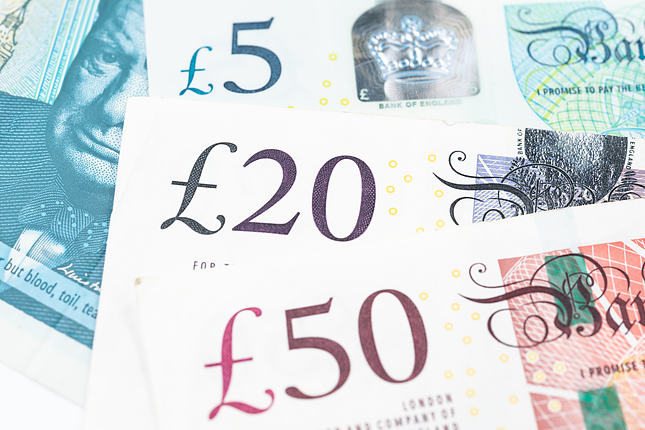Here is what you need to know on Thursday, January 9:
The US Dollar (USD) gathered strength against its rivals for the second consecutive day on Wednesday as markets assessed US data releases and news on President-elect Donald Trump's tariff plans. Stock markets in the US will remain closed and bond markets will close early on Thursday, in observance of a national day of mourning to honor the death of former President Jimmy Carter. In the American session, several Federal Reserve (Fed) policymakers are scheduled to deliver speeches.
US Dollar PRICE This week
The table below shows the percentage change of US Dollar (USD) against listed major currencies this week. US Dollar was the strongest against the British Pound.
| USD | EUR | GBP | JPY | CAD | AUD | NZD | CHF | |
|---|---|---|---|---|---|---|---|---|
| USD | 0.05% | 1.13% | 0.63% | -0.44% | 0.35% | 0.41% | 0.21% | |
| EUR | -0.05% | 1.07% | 0.55% | -0.44% | 0.34% | 0.40% | 0.20% | |
| GBP | -1.13% | -1.07% | -0.51% | -1.49% | -0.72% | -0.67% | -0.86% | |
| JPY | -0.63% | -0.55% | 0.51% | -1.08% | -0.27% | -0.20% | -0.20% | |
| CAD | 0.44% | 0.44% | 1.49% | 1.08% | 0.73% | 0.81% | 0.64% | |
| AUD | -0.35% | -0.34% | 0.72% | 0.27% | -0.73% | 0.06% | -0.14% | |
| NZD | -0.41% | -0.40% | 0.67% | 0.20% | -0.81% | -0.06% | -0.20% | |
| CHF | -0.21% | -0.20% | 0.86% | 0.20% | -0.64% | 0.14% | 0.20% |
The heat map shows percentage changes of major currencies against each other. The base currency is picked from the left column, while the quote currency is picked from the top row. For example, if you pick the US Dollar from the left column and move along the horizontal line to the Japanese Yen, the percentage change displayed in the box will represent USD (base)/JPY (quote).
US President-elect Donald Trump is considering declaring a national economic emergency to allow for a new tariff program, CNN reported on Wednesday, citing four sources familiar with the discussions. This headline caused markets to adopt a cautious stance and helped the US Dollar (USD) outperform its peers.
Meanwhile, the data from the US showed that employment in the private sector increased by 122,000 in December, missing the market expectation of 140,000. On a positive note, weekly Initial Jobless Claims declined to 201,000 in the week ending January 4 from 211,000 in the previous week. Finally, the minutes of the Fed's December policy meeting showed that almost all officials said upside risks to inflation had increased and that they agreed on the need for a careful approach to further policy easing.
The USD Index closed the second consecutive trading day in positive territory on Wednesday and was last seen trading marginally higher on the day slightly above 109.10.
EUR/USD continued to push lower and registered small losses on Wednesday. The pair struggles to find a foothold and fluctuates near 1.0300 in the European morning on Thursday. Germany's Destatis reported that Industrial Production expanded by 1.5% on a monthly basis in November, surpassing the market expectation for an increase of 0.5%.
GBP/USD declined sharply and lost nearly 1% on Wednesday. The pair stays under bearish pressure to begin the European session and trades at its lowest level in over a year below 1.2300.
USD/JPY posted small gains for the third consecutive day on Wednesday but struggled to gather further bullish momentum. The pair retreats slightly on Thursday while managing to hold above 158.00.
The data from China showed that annual inflation, as measured by the change in the Consumer Price Index (CPI), declined to 0.1% in December from 0.2% in November. In the meantime, the Australian Bureau of Statistics announced that Retail Sales rose by 0.8% on a monthly basis in November. AUD/USD showed no immediate reaction to these figures and was last seen losing 0.3% on the day near 0.6200.
Gold extended its recovery after closing in the green on Tuesday and touched a multi-week high of $2,670 on Wednesday. XAU/USD stays relatively quiet and trades in a narrow band above $2,660 early Thursday.
Fed FAQs
Monetary policy in the US is shaped by the Federal Reserve (Fed). The Fed has two mandates: to achieve price stability and foster full employment. Its primary tool to achieve these goals is by adjusting interest rates. When prices are rising too quickly and inflation is above the Fed’s 2% target, it raises interest rates, increasing borrowing costs throughout the economy. This results in a stronger US Dollar (USD) as it makes the US a more attractive place for international investors to park their money. When inflation falls below 2% or the Unemployment Rate is too high, the Fed may lower interest rates to encourage borrowing, which weighs on the Greenback.
The Federal Reserve (Fed) holds eight policy meetings a year, where the Federal Open Market Committee (FOMC) assesses economic conditions and makes monetary policy decisions. The FOMC is attended by twelve Fed officials – the seven members of the Board of Governors, the president of the Federal Reserve Bank of New York, and four of the remaining eleven regional Reserve Bank presidents, who serve one-year terms on a rotating basis.
In extreme situations, the Federal Reserve may resort to a policy named Quantitative Easing (QE). QE is the process by which the Fed substantially increases the flow of credit in a stuck financial system. It is a non-standard policy measure used during crises or when inflation is extremely low. It was the Fed’s weapon of choice during the Great Financial Crisis in 2008. It involves the Fed printing more Dollars and using them to buy high grade bonds from financial institutions. QE usually weakens the US Dollar.
Quantitative tightening (QT) is the reverse process of QE, whereby the Federal Reserve stops buying bonds from financial institutions and does not reinvest the principal from the bonds it holds maturing, to purchase new bonds. It is usually positive for the value of the US Dollar.
Information on these pages contains forward-looking statements that involve risks and uncertainties. Markets and instruments profiled on this page are for informational purposes only and should not in any way come across as a recommendation to buy or sell in these assets. You should do your own thorough research before making any investment decisions. FXStreet does not in any way guarantee that this information is free from mistakes, errors, or material misstatements. It also does not guarantee that this information is of a timely nature. Investing in Open Markets involves a great deal of risk, including the loss of all or a portion of your investment, as well as emotional distress. All risks, losses and costs associated with investing, including total loss of principal, are your responsibility. The views and opinions expressed in this article are those of the authors and do not necessarily reflect the official policy or position of FXStreet nor its advertisers. The author will not be held responsible for information that is found at the end of links posted on this page.
If not otherwise explicitly mentioned in the body of the article, at the time of writing, the author has no position in any stock mentioned in this article and no business relationship with any company mentioned. The author has not received compensation for writing this article, other than from FXStreet.
FXStreet and the author do not provide personalized recommendations. The author makes no representations as to the accuracy, completeness, or suitability of this information. FXStreet and the author will not be liable for any errors, omissions or any losses, injuries or damages arising from this information and its display or use. Errors and omissions excepted.
The author and FXStreet are not registered investment advisors and nothing in this article is intended to be investment advice.
Recommended content
Editors’ Picks

EUR/USD holds around 1.0300, with USD still dominating the scene
EUR/USD trades within familiar levels at around the 1.0300 mark, although the US Dollar pushes marginally higher in a quiet, holiday-inspired American session. Focus shifts to US Nonfarm Payrolls on Friday.

GBP/USD rebounds from multi-month lows, trades around 1.2300
GBP/USD trimmed part of its early losses and trades around 1.2300 after setting a 14-month-low below 1.2250. The pair recovers as the UK gilt yields correct lower after surging to multi-year highs on a two-day gilt selloff. Markets keep an eye on comments from central bank officials.

Gold hovers around $2.670, aims higher
Gold extended its weekly recovery and traded at its highest level since mid-December, above $2,670. The bright metal retreated modestly in a quiet American session, with US markets closed amid a National Day of Mourning.

Bitcoin falls below $94,000 as over $568 million outflows from ETFs
Bitcoin continues to edge down, trading below the $94,000 level on Thursday after falling more than 5% this week. Bitcoin US spot Exchange Traded Funds recorded an outflow of over $568 million on Wednesday, showing signs of decreasing demand.

How to trade NFP, one of the most volatile events Premium
NFP is the acronym for Nonfarm Payrolls, arguably the most important economic data release in the world. The indicator, which provides a comprehensive snapshot of the health of the US labor market, is typically published on the first Friday of each month.

Best Forex Brokers with Low Spreads
VERIFIED Low spreads are crucial for reducing trading costs. Explore top Forex brokers offering competitive spreads and high leverage. Compare options for EUR/USD, GBP/USD, USD/JPY, and Gold.